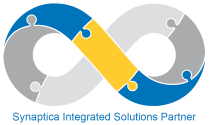I’ve been lucky enough to attend two talks on Hadoop in the last few weeks which has made me take a closer look at this technology. In case you didn’t know, Hadoop is an Apache top level open source project comprising a framework for distributed computing and storage, originally created by Doug Cutting (also the creator of Apache Lucene) while at Yahoo! in 2005. Distributed computing is carried out using MapReduce (roughly speaking, the ‘map’ bit involves splitting a processing task up into chunks and distributing these among various processing nodes, the ‘reduce’ bit brings all the results together again) and the storage uses the Hadoop Distributed File System (HDFS). There are other parts of Hadoop including a database (HBase), data warehouse with SQL-like language (Hive), scripting language (Pig) and more.
Those I’ve spoken to who have attempted to build applications on Hadoop have said that it’s very much a kit of parts rather than an integrated platform, so not that easy to get started with – which has led to the emergence of various vendors providing ‘curated’ distributions and support, much as Lucidworks does for Apache Lucene/Solr. Cloudera, Hortonworks, and MapR are just some of the best-known of these vendors. With everyone jumping on the BigData bandwagon these days some of these vendors have attracted significant interest and funding.
As you might expect full-text search is often required for these distributed systems and there have been various attempts to bring Hadoop and search closer together. Hortonworks support integration with Elasticsearch, although this currently appears to mean that you can use Hive or Pig to move data from Hadoop on or off a separate Elasticsearch cluster, rather than the search engine running on the cluster itself. Cloudera’s integration of Hadoop with Solr appears to be tighter, with Solr storing its indexes on HDFS directly (perhaps not surprising considering Lucene/Solr committer Mark Miller, who is responsible for most recent SolrCloud development, works for Cloudera). Cloudera even has its own data conditioning framework Flume (yes, it seems we need yet another data conditioning/pipelining solution!) and allows for distributed indexing. MapR have partnered with LucidWorks and integrated LucidWorks Search into their distribution. All these vendors are heavy contributors to Hadoop of course and most also contribute to Lucene/Solr or Elasticsearch.
Since Hadoop has been linked with search from the beginning one can hope that these integration efforts will continue – applications that require distributed search are becoming increasingly common and Hadoop, despite its nature as a kit of parts requiring assembly, is a good foundation to build on.















Hi, interesting website.
My colleague and I have been doing NLP on Hadoop through running GATE on a system called Behemoth. It combines Hadoop BigData processing with NLP techniques. We then feed the processed data to SolR for search and browsing.
I would be interested to chat more next time I am in Cambridge
Of course, let me know when you’re in town – perhaps you’d like to come to one of our Search Meetups?